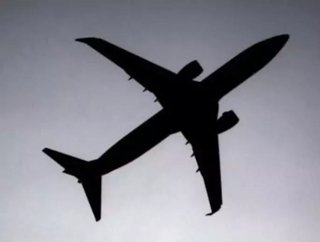2012 has lowest jet accident rate say IATA

IATA announced this week that the 2012 global accident rate for Western-built jets is the lowest in aviation history.
The 2012 global Western-built jet accident rate (measured in hull losses per million flights of Western-built jets) was 0.20, the equivalent of one accident every 5 million flights.
This represented a 46% improvement over 2011, when the accident rate was 0.37, or one accident for every 2.7 million flights.
IATA’s 240+ member airlines recorded no Western-built jet hull losses in 2012.
“The industry’s 2012 record safety performance was the best in history. Each day approximately 100,000 flights arrive safely at their destination. Airlines, airports, air navigation service providers, manufacturers and safety regulators work together to ensure every flight is as safe as possible. Their dedication and cooperation has made air travel remarkably safe. Nevertheless, there is still work to do. Every accident is one too many and each fatality is a human tragedy. The first commercial airline flight took place on 1 January 1914. Since then the very first flight the airline industry has made continuous improvement in safety its top priority,” said Tony Tyler, IATA’s Director General and CEO.
However, following the fantastic success rate in the West, it is time to focus attention on Africa according to IATA, following a higher Western-built jet hull loss rate on the continent when compared to 2011 (3.71 vs. 3.27).
Poor rates in Africa
The region’s accident rate for all aircraft types more than doubled (12.44 accidents per million flights from 6.17 in 2011), with 13 accidents in 2012 (up from 8 accidents in 2011).
African airlines on the IOSA registry had no accidents.
“Africa is a continent divided on performance. Airlines on the IOSA registry are performing at or above industry average rates. But the continent’s overall performance is far from satisfactory. It should be as safe to travel by air in Africa as it is in any other part of the world,” said Tyler.
In May 2012, IATA, with the International Civil Aviation Organization (ICAO) and a host of other organizations, committed to an Africa Strategic Improvement Action Plan aimed at addressing safety deficiencies and strengthening regulatory oversight in the region by 2015. The Plan was endorsed as part of the ‘Abuja Declaration’ by the Ministerial meeting on Aviation Safety and Security of the African Union in July and endorsed at the Assembly of the African Union in January 2013.
“Stakeholders are united in their commitment to bring all of Africa to world class safety levels through the adoption of global standards. Passage of the Abuja Declaration is a key step along this path,” Tyler said. Critical to the success of this plan is mandatory adoption of IOSA by African states.
Detailed Results
Safety by the numbers:
· Close to 3 billion people flew safely on 37.5 million flights (29.8 million by jet, 7.7 million by turboprop)
· 75 accidents (all aircraft types, Eastern and Western built), down from 92 in 2011
· 15 fatal accidents (all aircraft types) versus 22 in 2011
· 6 hull loss accidents involving Western-built jets compared to 11 in 2011
· 3 fatal hull loss accidents involving Western-built jets, down from 5 in 2011
· 414 fatalities compared to 486 in 2011
· Fatality rate slightly increased to 0.08 per million passengers from 0.07 in 2011 based on Western-built jet operations
· IATA member airlines outperformed the industry average for accidents of all aircraft types (0.71 accidents per million flights compared to 2.01), accounting for 13 of the 75 accidents
IOSA
Airlines on the IATA Operational Safety Audit Registry (IOSA) experienced no Western-built jet hull loss accidents. The total accident rate (all aircraft types) for IOSA registered carriers was 4.3 times better than the rate for non-IOSA carriers (0.96 vs. 4.11). Today 381 airlines are on the IOSA registry (www.iata.org/registry). For IATA’s 240+ airlines IOSA is a requirement for membership in the association. That some 140 non-member airlines are on the registry is a clear indication that IOSA has become the global benchmark for airline operational safety management.
“IOSA once again demonstrated its positive impact on aviation safety. Carriers on the IOSA registry recorded an accident rate that was more than four times better than their non-registered counterparts. Not only did IOSA registered carriers have a lower accident rate but the accidents were less severe in terms of fatalities and damage to aircraft,” said Tyler.
During 2012, IATA continued its work with airline members to develop the Enhanced IOSA. Enhanced IOSA adds a further dimension with a focus on airlines’ internal quality assurance program to implement self-auditing methodology based on IOSA principles.
Regional highlights—Western-built jet hull loss rates
The following regions outperformed the global Western-built jet hull loss rate of 0.20: Commonwealth of Independent States (CIS) (0.0), Europe (0.15), Middle East and North Africa (0.0), North America (0.0), and North Asia (0.0)
The following regions saw their safety performance improve in 2012 compared to 2011: the CIS (from 1.06 to 0.00), Latin America and the Caribbean (from 1.28 to 0.42), Middle East and North Africa (from 2.02 to 0.0) and North America (from 0.10 to 0.0).
The following regions saw safety performance decline in 2012 compare to 2011: Africa (from 3.27 to 3.71), Asia-Pacific (from 0.25 to 0.48) and Europe (from 0.0 to 0.15).
Latin America and the Caribbean posted a second consecutive year of improvement (0.42 vs. 1.28) but the region’s rate was still higher than the world average.
Africa registered a higher rate, from 3.27 in 2011 to 3.71 in 2012, and it is still the worst performer by a large margin.






